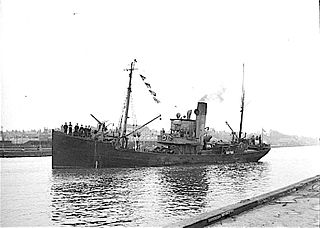 W
WThe Castle-class minesweeper was a highly seaworthy naval trawler adapted for patrol, anti-submarine warfare and minesweeping duties and built to Admiralty specifications. Altogether 197 were built in the United Kingdom between 1916 and 1919, with others built in Canada, India and later New Zealand. Many saw service in the Second World War.
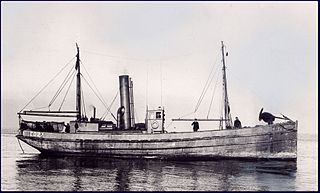 W
WThe CD-class naval drifters were armed naval drifters constructed in 1917 for the Royal Navy in Canada. 100 were ordered for use in British waters during World War I numbered from CD 1 to CD 100, of which 42 were transferred to the Royal Canadian Navy and 18 were transferred to the United States Navy. In British waters, they were used to patrol areas around Gibraltar and Bermuda. In Canadian waters, the Maritimes and in American waters, along the New England coast. Following the war, the drifters were either sold into mercantile service or scrapped. Some survived in British service to be used during World War II.
 W
WThe Isles-class trawlers were a class of naval trawler used by the Royal Navy, Royal Canadian Navy and Royal New Zealand Navy during World War II.
 W
WThe Llewellyn-class minesweepers were a series of ten coastal minesweepers constructed for the Royal Canadian Navy during the Second World War. Based on the Admiralty type MMS-class minesweeper, the Llewellyn class were constructed of wood and used for the removal of magnetic influence mines. Two were built in Quebec, with the eight constructed on the Western Coast of Canada. Mostly used as guard ships during the war, only three of the ten remained in Royal Canadian Navy service following the war, with the last being discarded in 1957. Following naval service, vessels of the class ended up in commercial service, with some becoming fishing vessels, cargo ships and one a floating restaurant. Six of the ten ships were lost in commercial service.
 W
WThe P.V. type minesweeping trawlers were seven Royal Canadian Navy minesweeping trawlers built before the First World War in the United States. Initially constructed and used as menhaden trawlers they were taken into service the Royal Canadian Navy during the First World War for patrol duty along the Atlantic coast. Following the war they were returned to their original service.
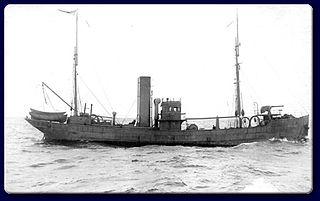 W
WThe TR series were minesweeping naval trawlers built during World War I. Ordered by the Royal Navy, they were loaned to the Royal Canadian Navy for seaward defence of the East Coast of Canada. The total number of vessels that entered service is unknown with 60 hulls constructed by eight Canadian shipyards. Based on the British Castle class, some entered service with the United States Navy during the war. Following World War I, they were sold for commercial use to replace the fishing vessels lost during the war. In World War II many of them were taken over by the Royal Navy as auxiliary minesweepers and two of them returned to the Royal Canadian Navy.
 W
WHMCS Anticosti was an Anticosti-class minesweeper that served in the Canadian Forces from 1989 to 2000. Originally an oil rig support vessel, she was purchased in 1989 and saw service until the entry of the newer Kingston-class coastal defence vessels. The ship was named for Anticosti Island, the second to bear the name. Following her Canadian naval career, Anticosti was sold to commercial interests.
 W
WHMCS Comox was a Fundy-class minesweeper that served in the Royal Canadian Navy from 1938–1945. She served during the Second World War as a local patrol craft for Esquimalt, British Columbia before transferring to Halifax, Nova Scotia performing general minesweeping duties. After the war she sold for mercantile service and converted to a tugboat named Sung Ming. The ship's registry was deleted in 1993.
 W
WHMCS Constance was a commissioned minesweeper of the Royal Canadian Navy (RCN) during the First World War. Originally built as a fisheries cruiser for the Department of Marine and Fisheries, upon completion she was transferred to the Department of Customs, and was used by the Customs Preventive Service. Constance spent the entire war as a patrol and examination vessel on the East Coast of Canada. Following the war, the vessel was sold in 1924.
 W
WHMCS Curlew was a commissioned minesweeper and patrol vessel of the Royal Canadian Navy (RCN) that served in the First World War. Constructed in Ontario in 1892, Curlew was initially a Canadian government fisheries patrol vessel on the East Coast of Canada. In 1912, the ship was fitted as a minesweeper and in 1914, joined the RCN. Curlew spent the entire war on the East Coast of Canada. Following the war, the ship was taken out of service and sold in 1921.
 W
WHMCS Digby was a Bangor-class minesweeper that served in the Royal Canadian Navy during the Second World War. She saw action in the Battle of the Atlantic and the Battle of the St. Lawrence. After the war she was supposed to be transferred to the Royal Canadian Mounted Police but that was cancelled and instead was recommissioned into the Royal Canadian Navy, serving until 1956.
 W
WHMCS Esquimalt was a Bangor-class minesweeper that served in the Royal Canadian Navy during the Second World War. She saw service in the Battle of the Atlantic and in the Battle of the St. Lawrence. She was sunk in 1945, the last Canadian warship to suffer that fate. She was named for Esquimalt, British Columbia.
 W
WHMCS Fort Frances was an Algerine-class minesweeper that served in the Royal Canadian Navy during the Second World War. She served primarily as a coastal convoy escort in the Battle of the Atlantic. The ship was named for Fort Frances, a town in northwestern Ontario. Following the war, the vessel was transferred to the Department of Mines and Technical Surveys and used for hydrographic and oceanographic survey. The vessel was discarded in 1974 and broken up for scrap.
 W
WHMCS Fundy was a Fundy-class minesweeper that served in the Royal Canadian Navy from 1938 to 1945. The minesweeper was the first warship built for Canada since 1918. She saw service in the Atlantic Ocean during the Second World War. The vessel was named for the Bay of Fundy. After the war she had an extensive civilian career.
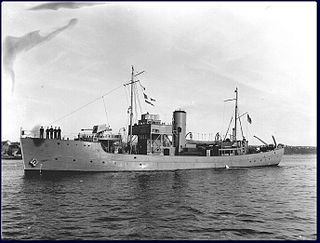 W
WHMCS Gaspé was a Fundy-class minesweeper that served in the Royal Canadian Navy from 1938 to 1945. She saw service during the Second World War as part of the local defence of Halifax, Nova Scotia. She was named for Gaspé Bay in Quebec. Following the war the ship was sold for mercantile use, becoming the tugboat Sung Li. The ship's registry was deleted in 1993.
 W
WHMCS Miramichi was a Bay-class minesweeper that was constructed for the Royal Canadian Navy during the Cold War. Entering service in 1957, the vessel was used as a training ship on the West Coast of Canada for the majority of her career. Miramichi was decommissioned in 1998 and the vessel's fate is unknown.
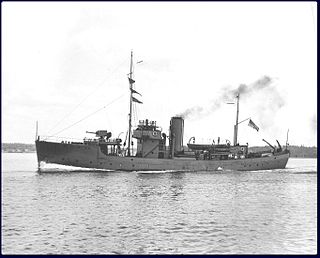 W
WHMCS Nootka was a Fundy-class minesweeper that served in the Royal Canadian Navy from 1938–1945. She saw service during the Second World War as a local minesweeper working out of Halifax, Nova Scotia. She was named for Nootka Sound. In 1943 she was renamed HMCS Nanoose to allow the unit name Nootka to be used by the destroyer HMCS Nootka. Following the war the ship was sold for mercantile use, becoming the tugboat Sung Ling. The ship's registry was deleted in 1993.
 W
WAfter the fall of Norway to Nazi Germany on 10 June 1940, the Norwegian whale factory ship Suderøy and her whale catchers, Suderøy IV (J03), Suderøy V (J04), Suderøy VI (J05) and Star XVI were ordered to sail to Halifax from Hampton Roads, where they had taken refuge. In June 1940, at Halifax, Suderøy IV, V and VI were chartered from the Norwegian government in exile by the Royal Canadian Navy, converted and commissioned as minesweepers.
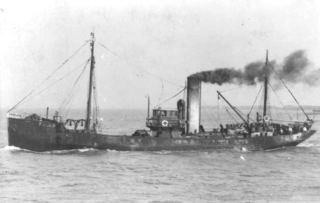 W
WST Pasages was originally a Canadian "Castle" – TR series minesweeping trawler built by the Dominion Shipbuilding Company, Toronto, in 1917 for service with the Royal Canadian Navy during World War I as TR 14. Following the war the vessel was taken to the United Kingdom and converted to a fishing trawler in the 1920s. Renamed Pasages, the vessel ran aground in 1931 on the Isle of Man. The vessel was wrecked and her remains can still be seen.
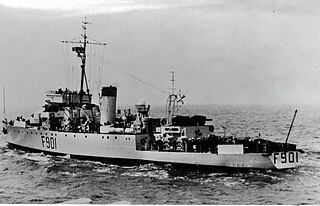 W
WHMCS Wallaceburg was an Algerine-class minesweeper that served in the Royal Canadian Navy during the Second World War as a convoy escort during the Battle of the Atlantic. After the war the vessel was used from 1950 to 1959 for cadet training. In 1959 she was sold to the Belgian Navy and served until 1969 as F901 Georges Lecointe, the second ship to be named after Georges Lecointe.
 W
WHMCS Winnipeg was an Algerine-class minesweeper that served in the Royal Canadian Navy during the Second World War. Used primarily as a convoy escort, the vessel served in the Battle of the Atlantic. Following the war she placed in reserve before being sold to Belgium and renamed A.F. Dufour. She served with the Belgian Navy until 1966.